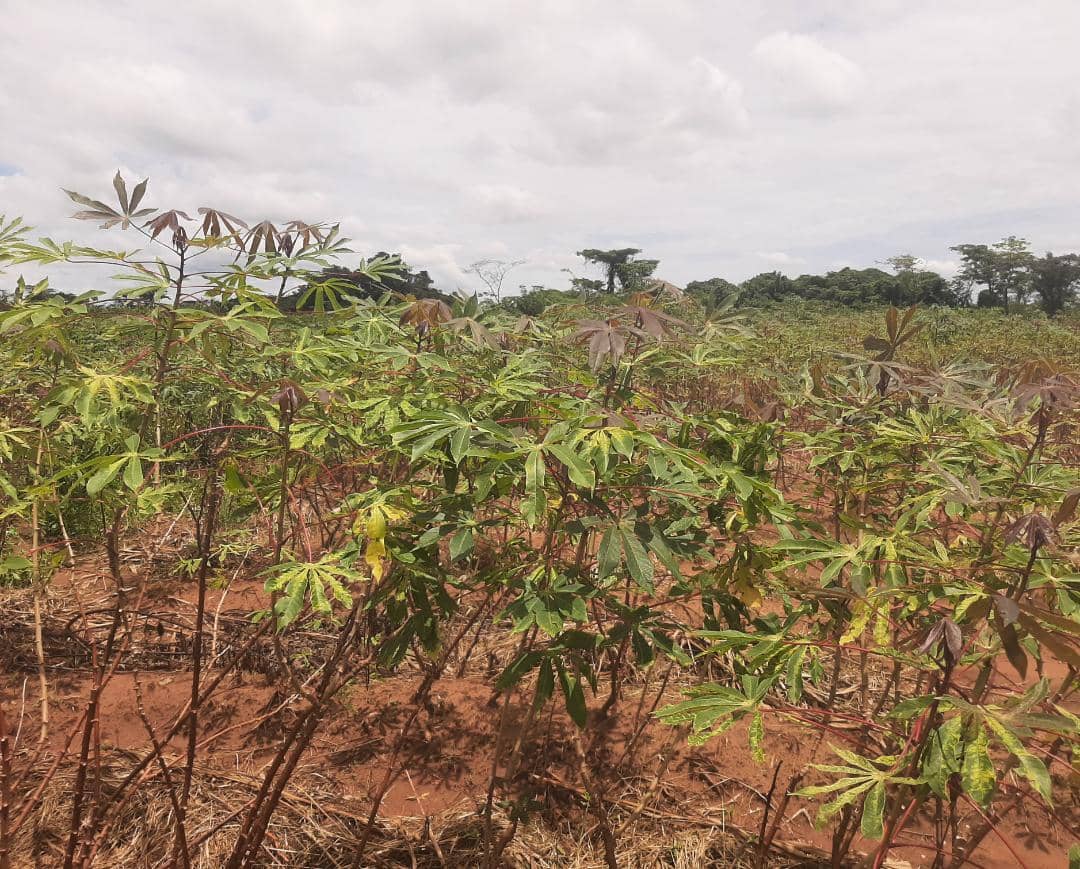
Cassava is a vital crop for millions of people across Africa, Asia, and Latin America. Although it has many benefits, such as high yield, drought tolerance, and the ability to grow in poor soil, it is also vulnerable to various diseases that can result in significant losses in the quantity and quality of its roots and leaves. The most critical cassava diseases are:
- Cassava mosaic disease (CMD): This disease is caused by various strains of cassava mosaic begomoviruses (CMBs), which whiteflies transmit. CMD results in yellowing, distortion, and a decrease in leaf size, resulting in stunted growth and low root yield. In severe cases, CMD can cause up to 100% yield loss. It is prevalent in Africa and parts of Asia.
- Cassava brown streak disease (CBSD): This disease is caused by two species of cassava brown streak viruses (CBSVs), which whiteflies also transmit. CBSD causes chlorotic or necrotic streaks on stems and leaves, as well as brown necrosis in the roots. CBSD affects root quality, making them unsuitable for consumption or sale. It is endemic in East and Central Africa and has recently spread to West Africa.
- Cassava bacterial blight (CBB): This disease is caused by the bacterium Xanthomonas axonopodis pv. manihotis, which enters the plant through natural openings or wounds. CBB results in angular leaf spots, wilting, dieback, and cankers on the stems. It can reduce root yield by up to 75% and affect root quality by increasing the cyanide content. CBB is widespread in tropical and subtropical regions, particularly in humid conditions.
- Cassava anthracnose disease (CAD): This disease is caused by the fungus Colletotrichum gloeosporioides f.sp. manihotis, which enters the plant through wounds or insect bites. CAD causes lesions on stems and petioles, which can girdle and kill the plant. CAD can also cause root rot, reducing root yield by up to 50%. It is common in Africa, Asia, and Latin America, particularly during rainy seasons.
Farmers can adopt various integrated pest management (IPM) strategies to tackle these cassava diseases. These methods combine cultural, biological, and chemical methods. Some of the possible IPM practices are:
- Use clean planting material: Farmers should use healthy cuttings from disease-free plants or certified planting material from reliable sources. They should also avoid using cuttings from old or volunteer plants that may harbor latent infections. Cuttings should be treated with hot water or fungicides to kill any pathogens present on the surface.
- Plant resistant varieties: Farmers should select varieties that have resistance or tolerance to the major cassava diseases in their area. They should also diversify their varieties to avoid genetic uniformity and vulnerability to new strains of pathogens. They should monitor their crops regularly for any signs of disease outbreak and report any unusual symptoms to extension agents or researchers.
- Control whiteflies: Farmers should reduce whitefly populations by removing weeds and alternative hosts that may harbor them. They should also intercrop cassava with other crops that repel or attract whiteflies away from cassava, such as maize, beans, or marigolds. They should use yellow sticky traps or neem oil to trap or deter whiteflies. They should avoid using broad-spectrum insecticides that may kill natural enemies of whiteflies or induce resistance in whiteflies.
- Practice crop rotation: Farmers should rotate cassava with other crops that are not hosts of cassava pathogens, such as cereals, legumes or vegetables. This can help break the disease cycle and reduce the build-up of inoculum in the soil. Crop rotation can also improve soil fertility and reduce weed pressure.
- Remove infected plants: Farmers should remove and destroy any plants that show symptoms of cassava diseases as soon as possible. They should also avoid planting cassava near infected fields or using infected plant debris as mulch or compost. They should also disinfect their tools and equipment after handling infected plants to prevent the spreading the disease to other fields.
- Apply fungicides or bactericides: Farmers should use fungicides or bactericides only as a last resort when other IPM methods fail to control cassava diseases effectively. They should use registered and approved products that are specific for the target pathogen and follow the label instructions carefully.


















